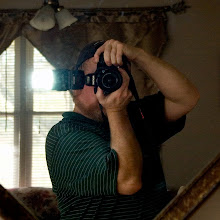In one of my first posts, #2 Stiched Panoramas, you'll find the first version of this image created using Photoshop CS3's "Photomerge" automation. Above is the new version which I'm much, much happier with. In order to allow my students, none of whom have Photoshop, to explore the incredible possibilities created by composting images, I decided to have a look at any free software that might be available.
Microsoft ICE (Image Composite Editor) was a complete surprise. While I realize that CS3 is rather outdated at this point, I didn't expect a free program to blow it away at anything. That's just what Microsoft ICE did. The image above required zero retouching to hide the signs of stitching that I worked so hard to remove in the first version.
You can download the full (not a trial) version for free [here]. The program was developed by Microsoft but never beyond this free version to a commercial product. Since the free version works great, that's a good thing.
The program is very simple to use. You can drag and drop your files onto the programs window and it goes to work. Be patient. I ran almost 100 JPG files through it at once on one occasion and it took well over an hour to process. If you are dealing with 20 or so images, it should only take a few minutes. If it seems "stuck" when the progress bar is complete on the "solving" screen, just left click the bar at the top of the screen and it will go on to "compositing" (at least this has always worked for me).
Here is what the main screen of Microsoft ICE looks like:
After you've dragged and dropped your files into the gray area (or added via the "File" drop down menu) and the program presents you with the result, click on the Perspective icon (last of the icons on the top left, the one next to the Crop icon). This will allow you to adjust the perspective of the composite image. You can move it up and down or left and right. Moving the image up will have the effect of making the top of the image tilt towards you. Play around with moving the image and trying the different perspective options until you find the most pleasing adjustment.
I hope you'll try out this exciting photographic technique. As a late adopter of digital, I never dreamed that digital photography would set us free from the limits of a single frame and allow us to create images with perspectives we couldn't even dream of in the past. Imagine the unexplored possibilities offered by digital imaging that still await us in the future.
Happy Shooting,
Al Williams



I can not wait to get home to get this downloaded. Thanks for all the great links. Looking forward to class Monday.
ReplyDeleteI have been wanting to try this for a while, just haven't had the courage to really give it a try, I think I will. I have GIMP (which is free), and I have Digital Photo Professional which came with my Canon, and I believe you can do a photostitch there too if you have a RAW format file. I haven't learned how to use either of those programs yet, maybe I should get busy and learn!
ReplyDelete